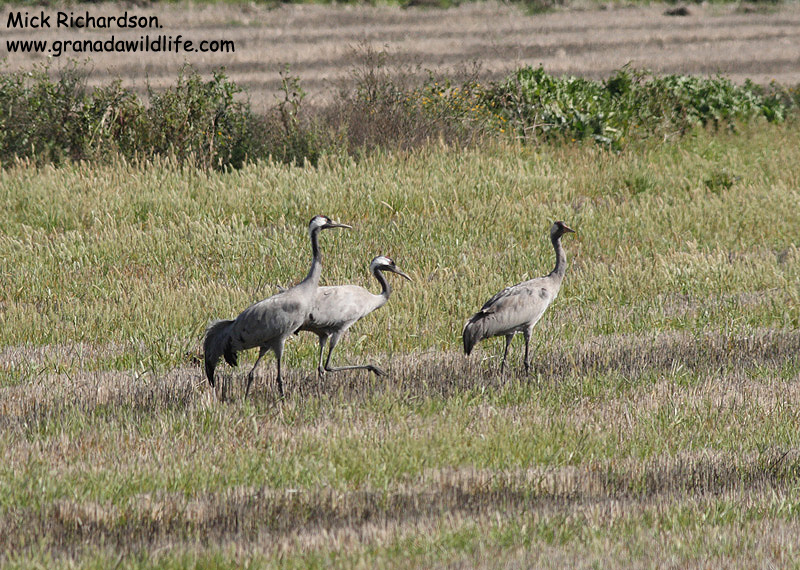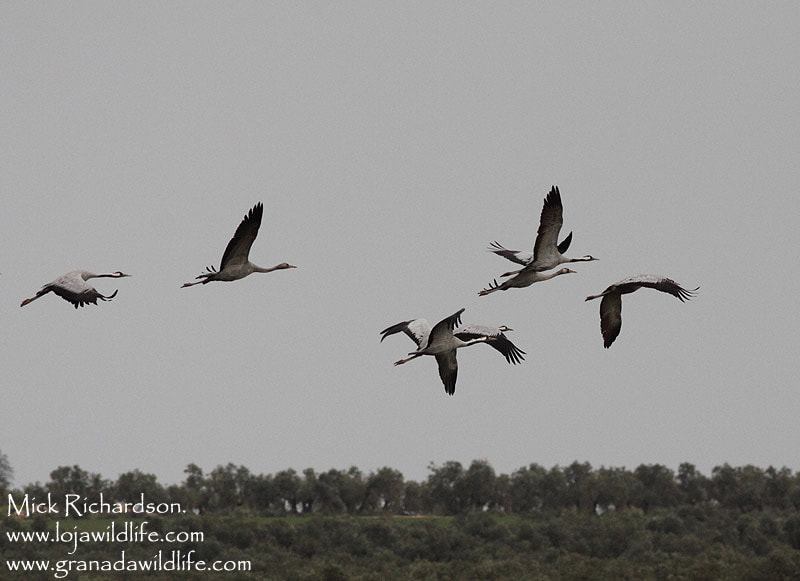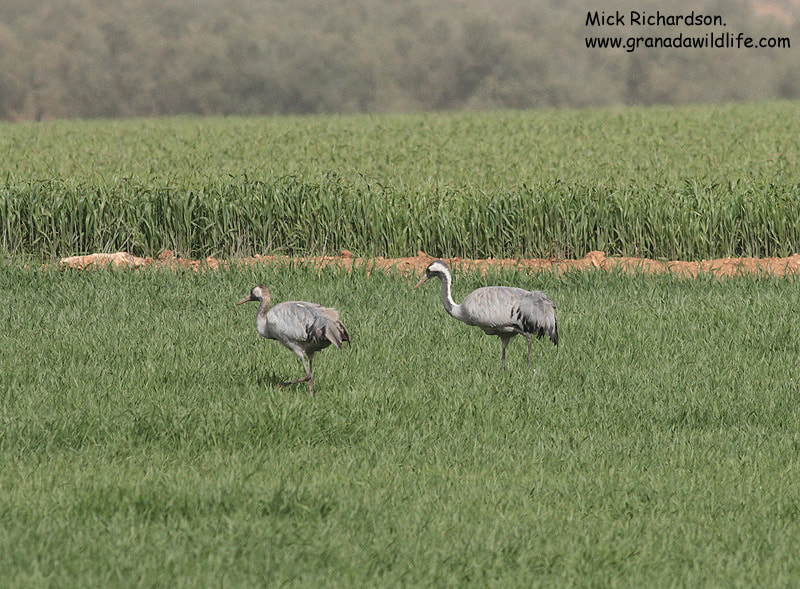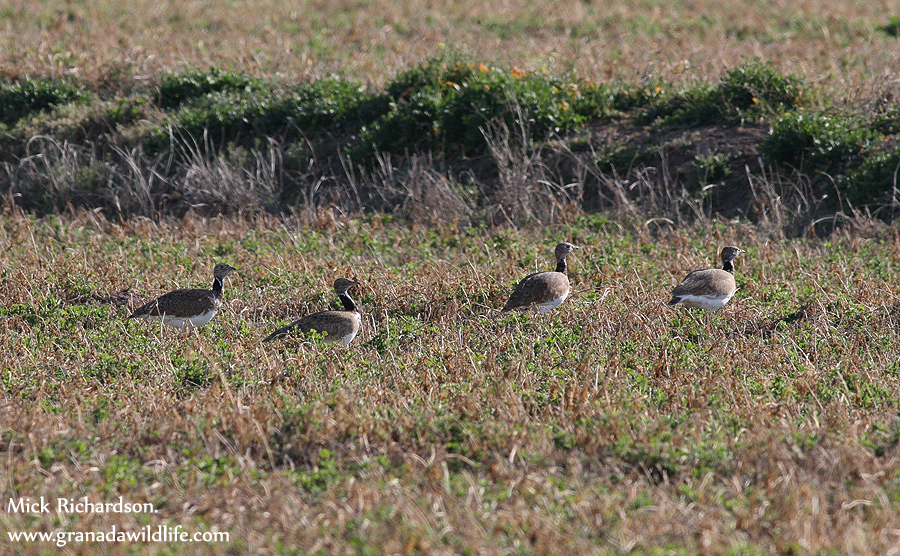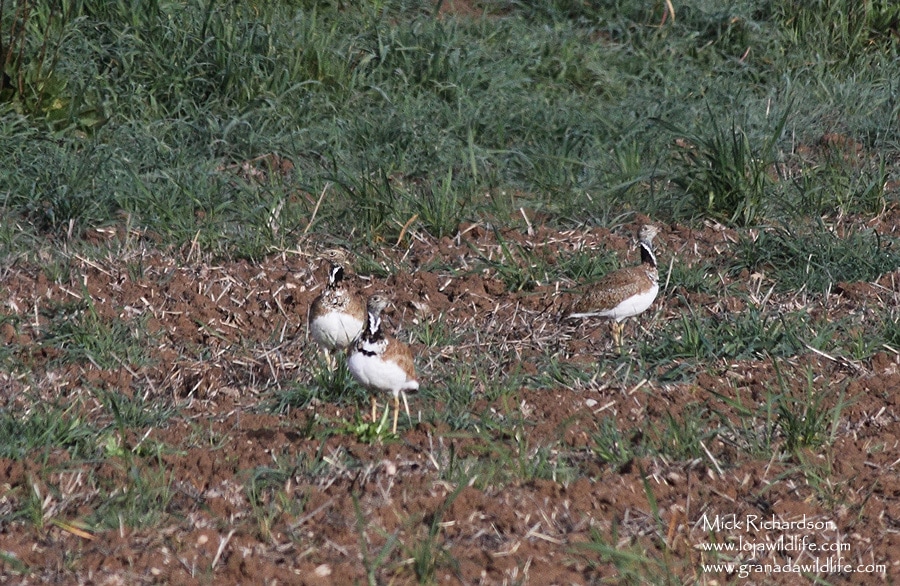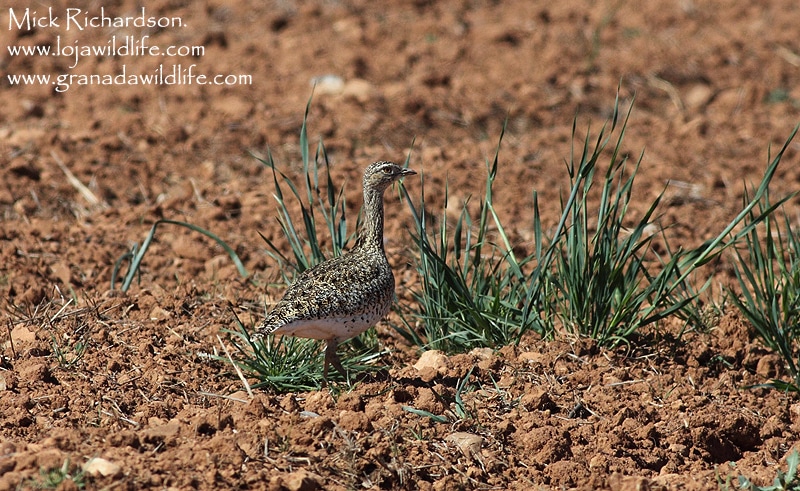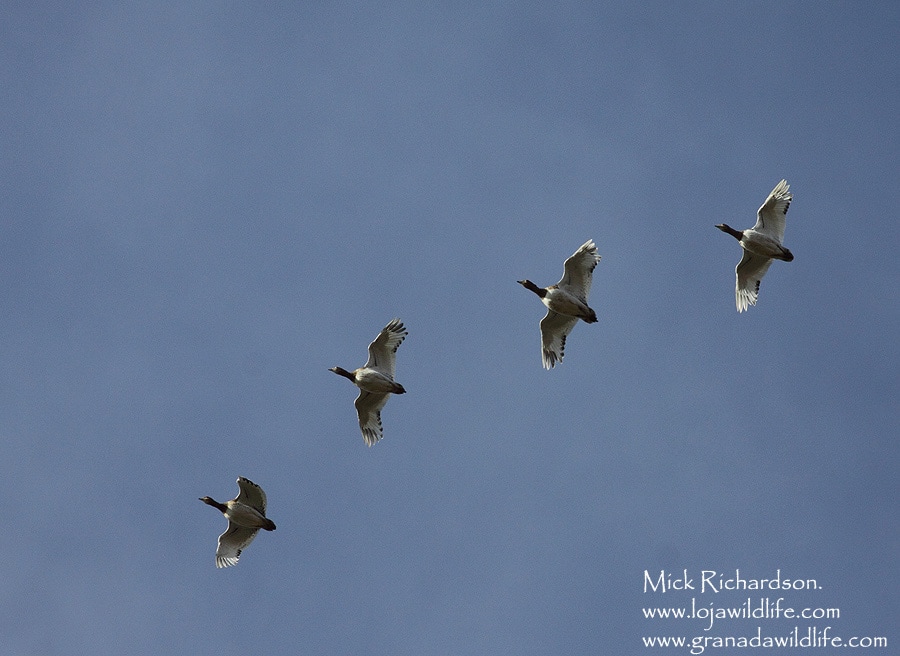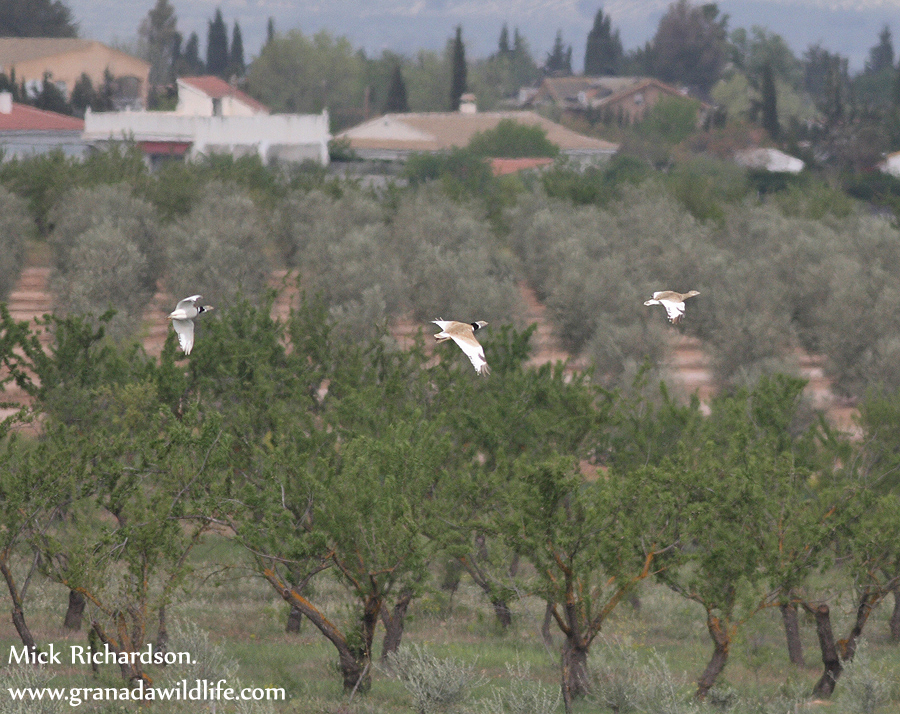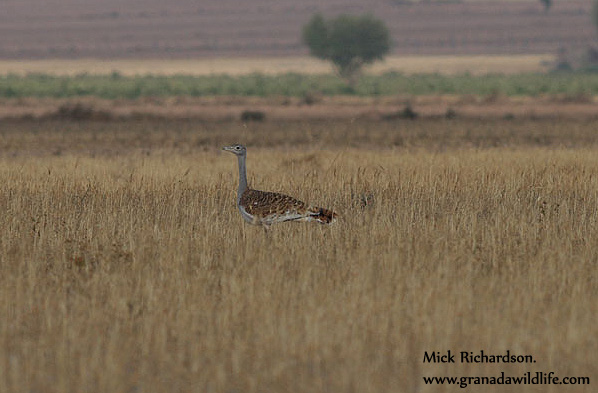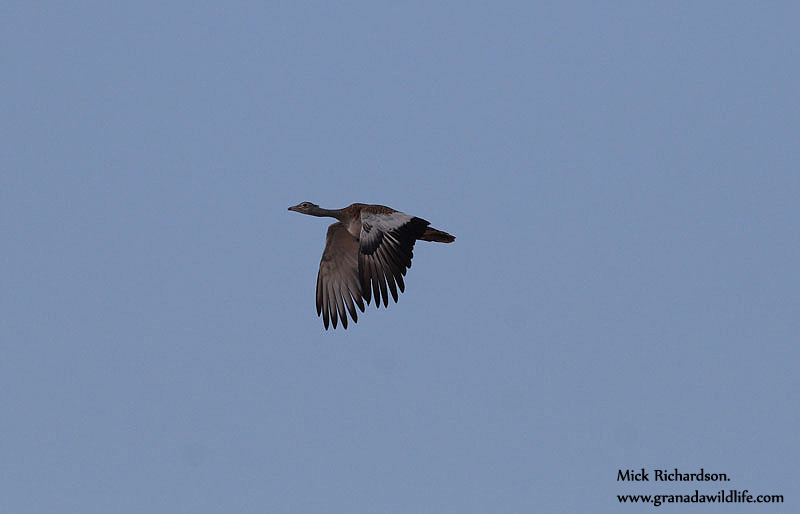Species Information.
Common Crane (Grulla Común / Grus grus).
An uncommon winter visitor with family parties sometimes found between November and March and other larger flocks passing through at night. Best chance of seeing them is in area 2.
It is a species that can be found in good numbers at Fuente de Piedra in Malaga Province and in smaller numbers in a population further North in Granada Province which is why we get some movements of birds over this area as groups migrate between the two locations.
It is a species that can be found in good numbers at Fuente de Piedra in Malaga Province and in smaller numbers in a population further North in Granada Province which is why we get some movements of birds over this area as groups migrate between the two locations.
Little Bustard (Sisón Común / Tetrax tetrax).
Regularly breeding in areas 3 and 6 and wintering in area 2 where a regular flock of up to 50 birds is seen near Huétor Tajar. Ten years ago the flock numbered 250+ but over the years the numbers have dropped quickly.
During the breeding season it can more often be heard than seen when it gives it far carrying raspberry sounding call.
During the breeding season it can more often be heard than seen when it gives it far carrying raspberry sounding call.
Great Bustard (Avutarda Común / Otis tarda).
A single bird seen right on the edge of area 1 to the North West of Loja. One unconfirmed winter record of two birds in fields in area 8. Surprisingly few records as the mles do tend to wander during the winter.
